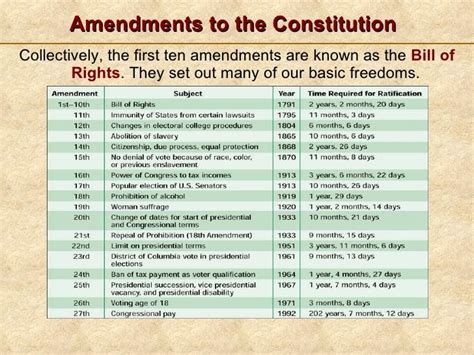How Formal Amendments Have Been Made to the U.S. Constitution
The United States Constitution, a cornerstone of American democracy, is a living document capable of adapting to societal changes. This adaptability is ensured through the amendment process, a carefully designed mechanism for making formal changes to its text. Understanding this process is crucial for any citizen interested in American governance and history. This post details the two primary methods for formally amending the Constitution.
The Two-Step Process: Proposal and Ratification
Amending the Constitution isn't a simple task; it involves a two-step process: proposal and ratification. Both steps require supermajorities, ensuring widespread agreement before any changes are implemented.
1. Proposal: Getting the Ball Rolling
There are two ways to propose a constitutional amendment:
-
By Congress: This is the most common method. A proposed amendment needs a two-thirds vote in both the House of Representatives and the Senate. This signifies strong bipartisan support for the change. Think of this as the "drafting" stage.
-
By a National Convention: Article V of the Constitution also allows for amendments to be proposed by a national convention called by Congress at the request of two-thirds of the state legislatures. This method has never been used, but it represents a potential alternative route for significant constitutional reform. This is a less-frequently used and somewhat theoretical method.
2. Ratification: Securing the Amendment
Once an amendment has been proposed, it moves to the ratification stage. Here, again, there are two paths:
-
By State Legislatures: This is the most common method of ratification. Three-quarters (38 out of 50) of the state legislatures must vote to ratify the amendment. This signifies acceptance at the state level.
-
By State Conventions: Alternatively, Congress can specify that ratification should occur through state conventions. This method was used only once, for the Twenty-first Amendment (repealing Prohibition). This less common approach allows for a more direct democratic input from the states.
Understanding the Amendment Process: Key Considerations
The amendment process is deliberately difficult, reflecting the Founding Fathers' desire for stability and careful consideration of any changes to the fundamental law of the land. Several factors contribute to the complexity:
-
Supermajorities Required: The need for two-thirds congressional approval and three-quarters state ratification ensures that amendments are not passed on a whim or with only narrow support.
-
Time Constraints: While there's no official time limit for ratification, lengthy delays can occur. This allows for ample public debate and consideration.
-
Political Climate: The success of an amendment often depends heavily on the prevailing political climate and the level of consensus on the issue at hand.
-
State vs. Federal Power: The involvement of state legislatures in the ratification process highlights the balance of power between the federal government and the individual states.
A Look at Successful Amendments
Throughout history, various amendments have been added to the Constitution, reflecting societal shifts and evolving values. Consider these notable examples:
-
Bill of Rights (Amendments 1-10): Guaranteed fundamental rights, including freedom of speech, religion, and assembly.
-
13th Amendment: Abolished slavery.
-
19th Amendment: Granted women the right to vote.
-
26th Amendment: Lowered the voting age to 18.
These examples demonstrate the Constitution's ability to adapt to changing social norms and ideals through the amendment process.
Conclusion: Preserving and Adapting the Constitution
The formal amendment process is a testament to the enduring strength and flexibility of the U.S. Constitution. By carefully balancing stability with the capacity for change, the system ensures that the document remains relevant and responsive to the needs of the American people, generation after generation. Understanding this process is essential for every informed citizen.
